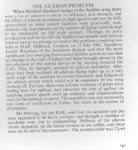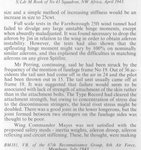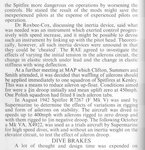Hello Kurfürst
To put it more clearly, on what you based your claim, that "aileron deflection was limited by half only final the last dive"?
Both the summary of the tests, dated 15 April 43 and the Flight report Nr. 901/274 on tests flown between 15 Feb and 12 March 43 (14 flights) clearly stated that the movement of the ailerons was halved. On the other hand looking again after a long time the Flight report Nr. 879/270 on tests flown between 28 Jan and 4 Feb 43, it didn't mentioned that and in the end demanded enlarged tail and limitation of the aileron movement to 50% before greater speeds were tried
Juha
To put it more clearly, on what you based your claim, that "aileron deflection was limited by half only final the last dive"?
Both the summary of the tests, dated 15 April 43 and the Flight report Nr. 901/274 on tests flown between 15 Feb and 12 March 43 (14 flights) clearly stated that the movement of the ailerons was halved. On the other hand looking again after a long time the Flight report Nr. 879/270 on tests flown between 28 Jan and 4 Feb 43, it didn't mentioned that and in the end demanded enlarged tail and limitation of the aileron movement to 50% before greater speeds were tried
Juha





 : ; 'nuff said...8)
: ; 'nuff said...8)